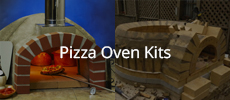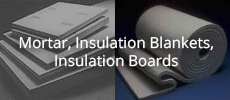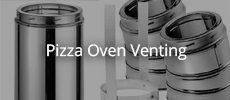Announcement
Collapse
No announcement yet.
36" WF Pompeii Oven in Maryland
Collapse
X
-
If it were me, (and I wanted gaps) I would close the gaps up to 1/8th or 3/32 inch. The spacers are readily available. I wouldn't worry so much where the drain holes are. When a tile crosses one, you can just cut that particular tile to tie the hole in to the grid.Last edited by Gulf; 08-20-2018, 06:11 PM.
-
Today was a good day! While it doesn't look like much progress, I was able to clean up some of the mortar on the outside of the base and get my coordinates set for the oven. I also scored around my weep holes to hopefully channel water towards the drains. I think I have figured out my final alignment for the tiles before I cut them tomorrow (so I don't cover the weep holes). And then I'll get started on laying the CaSi board tomorrow.
Do you think I've allowed enough (or too much?) space between tiles?5 Photos
Leave a comment:
-
I just scored 75, 8" x 8" ceramic tiles for free off a facebook yardsale group . (I'm liking this idea david s had here: https://community.fornobravo.com/for...444#post407444)
I think I'm going to lay these out and then use my angle grinder to score the concrete surface to create channels for the water to lead to the weep holes. Hopefully, I can lay my CaSi Board down on top of this tomorrow and start on my floor!1 Photo
Leave a comment:
-
I painted the side of my insulation. The RedGard was painted on the hearth slab, a few inches wider than the footprint of the board insulation. The insulation placed on top of the RedGard. More RG was painted on the edges of the board insulation and lapped down on the the hearth slab RG to seal the corner.Originally posted by bentedesco View Post
Very impressive results! What about painting the sides of the Fb Board? I'm a little worried about water seeping in from the sides... maybe I could just cover the sides and corners with foil?
Ceramic fiber rope. 1/2" diameter. RTV hi-temp silicone was used to adhere the rope to the brick.
You'll have a cap over your chimney, so water down the chimney flue should be a rare thing.
I'm not seeing the photos that I tried to load last night, I show a "photo does not display" icon. These are the same ones:
3 PhotosLast edited by mongota; 08-16-2018, 06:19 AM.
Leave a comment:
-
Ha! Sounds like you've been talking with my wife, I'm a continual tuner... often to my own detriment. I enjoy the process of perfecting a design or as my wife will say "breaking things that don't need to be fixed"Originally posted by mongota View PostI get the "I'm an engineer thing". lol. BS in Chem Engineering, MS in Applied Math and Physics. Sometimes the thought process simplifies things, sometimes it doesn't. There's always ONE more improvement to be made. Often times the best thing is to ditch those thoughts and go with common sense. lol Oh well, it is fun to think about how to best optimize the oven... but I agree, I think I'll just use Ceramic Cord + a few tubes of refractory Sealant up top and then I'll undercut the bottom bricks and possibly stuff it with some remnants of my blanket. Thanks for all your advice!
Oh well, it is fun to think about how to best optimize the oven... but I agree, I think I'll just use Ceramic Cord + a few tubes of refractory Sealant up top and then I'll undercut the bottom bricks and possibly stuff it with some remnants of my blanket. Thanks for all your advice!
Leave a comment:
-
I used 1/2" ceramic fiber rope.Originally posted by bentedesco View Post
Your explanation of the heat break w/the ceramic fiber rope is perfect, do you remember the diameter rope that you used?
The idea of different patterns of brick for the entry arch floor intrigues me, however, I'm confused how this helps as a heat break? I think I'll also go with the inverted 'V' and stuff it full of Ceramic cord.
I know I'm probably overthinking, but as an engineer, it's hard to turn that part of my brain off.
Regarding the pattern break from herringbone to running bond, it's simply that it's NOT a continuous run of brick from the hot to the not hot part of the floor, which is better than continuous brick. The door, coupled without there being a continuous piece of brick running under the door from oven to entry, the break in the pattern at the door does help reduce conduction from the oven floor brick out into the entry arch floor brick. I shot some temps a while ago, but I don't recall the temperature differential, it's not written in my notes.
The lack of a true heat break at that pattern change is not something I'm overly concerned with. The break in pattern is good. Undercutting it and adding insulation would be even better. But your oven will still cook without it.
I started a fire about 45 minutes ago. When the oven gets saturated, I'll try to take temps.
I get the "I'm an engineer thing". lol. BS in Chem Engineering, MS in Applied Math and Physics. Sometimes the thought process simplifies things, sometimes it doesn't. There's always ONE more improvement to be made. Often times the best thing is to ditch those thoughts and go with common sense. lol
Leave a comment:
-
Very impressive results! What about painting the sides of the Fb Board? I'm a little worried about water seeping in from the sides... maybe I could just cover the sides and corners with foil?Originally posted by mongota View Post
The RedGard has 4" of board insulation between it and the floor brick. Before I added the stucco shell over my dome, I had a couple fires and slid a thermocouple underneath the floor, between the 4" of board insulation and the hearth slab. The hearth slab has the RedGard painted on it. I had readings between 92 and 95 degrees as I moved around the circumference of the floor.
A cement-based waterproofing material like Thoroseal is always an option. I used that over the top of my stucco.
Leave a comment:
-
The RedGard has 4" of board insulation between it and the floor brick. Before I added the stucco shell over my dome, I had a couple fires and slid a thermocouple underneath the floor, between the 4" of board insulation and the hearth slab. The hearth slab has the RedGard painted on it. I had readings between 92 and 95 degrees as I moved around the circumference of the floor.Originally posted by bentedesco View PostUpdated, I just called the RedGard tech support line and asked them the operating temperature thresholds. It looks like RedGard will burn off over 165F. Given this, I'm not sure how long the RedGard will last.
A cement-based waterproofing material like Thoroseal is always an option. I used that over the top of my stucco.
Leave a comment:
-
Updated, I just called the RedGard tech support line and asked them the operating temperature thresholds. It looks like RedGard will burn off over 165F. Given this, I'm not sure how long the RedGard will last.
Leave a comment:
-
mongota This is just what I needed, thank you!Originally posted by mongota View PostI have 4" of board insulation under my entire fire brick build; under the oven dome and oven floor, the vent arch, and the vent floor.
I think having all of the substructure that any floor brick will sit upon (oven floor and entry floor) constructed the same way makes it easier to get a smooth top surface on your floor brick, helping to avoid lippage on the brick floor. I think it also lumps "everything firebrick" together and treats it all the same with regards to potential moisture abatement. And it also treats everything firebrick relatively the same thermally.
If you are building a true masonry chimney, a chimney 6' or 7' or 8' tall, all out of brick? Then I could see carrying that load directly to the hearth slab to minimize possible insulation compression. That can also depend on the footprint of your chimney. If it is well spread, with a large footprint due to buttressing, it could very well go on the insulation. If it's a "one brick wide" footprint, then it might be best to carry the chimney load directly to the slab. But I'd still recommend the vent arch floor brick being upon the same insulation as the oven floor brick.
Heat break:
1) Between my dome and my entry arch, the bricks are not mortared together. They are gapped just a bit, with the gap being filled with ceramic fiber rope and a couple beads of RTV silicon. I gapped them not just for heat transfer considerations, but also for differential expansion. I think it's important to isolate the vent arch structure from the dome structure just a bit, some for thermal, but mostly for differential movement. In retrospect I went overboard with my level of detail. Heck, even when I was building it I knew I was going overboard. But it is what it is, you know?
When all is said and done, I have continuous blanket insulation over my dome and over the vent arch. With the blanket doing its best to prevent heat loss from the structure as a whole, there's still going to be heat transfer from one structure to another. But...we do what we do.
2) Between my oven floor brick and my vent arch floor brick, right now my only separation between the two is a break in the brick floor pattern. My oven floor is herringbone, my vent arch floor is a running bond. Honestly, I see no need to get more technical than that, there is a temp drop at the break "as is". However, to take things further (lol...because that's what we do, you know?) when I get my insulated door on I'll take more temp readings. If I feel the need, I'll simply undercut the sides of each brick at that pattern break to create an inverted "V" gap between the two patterns, and either leave it as a void, or I'll probably tuck a wedge of board insulation in there. Again, who am I kidding. I'll add the wedge of insulation. Because that's what we do! lol
This is probably a very minor point...but even though my oven has only been cooking for a couple of weeks, I've cooked a few times inside the entry arch, with a pan on the entry arch floor brick. I've placed a door over the oven dome entry to keep high cooking temps in there, and another door over the face of the entry arch to maintain moderate temps inside the entry arch, with cooking pan placed on the entry arch floor. Having the entry floor brick insulated helped steady the entry arch temps during a long dehydrating "cook" of some tomatoes and basil, or whatever else we have happened to have in there.
So, I've all but given up the idea of the Masonry Chimney, given that I need to transport this, I think the best option for me will be to use a pipe for now and the once the oven has been moved, then I can consider adjusting it.
The pictures were very helpful, however I had a question as I noticed that you painted the exterior surfaces of your Fb Board (for waterproofing I assume), what product did you use to do this? <--- EDIT, I saw your post about RedGuard, thanks!! (https://community.fornobravo.com/for...399#post392399)
Your explanation of the heat break w/the ceramic fiber rope is perfect, do you remember the diameter rope that you used?
The idea of different patterns of brick for the entry arch floor intrigues me, however, I'm confused how this helps as a heat break? I think I'll also go with the inverted 'V' and stuff it full of Ceramic cord.
I know I'm probably overthinking, but as an engineer, it's hard to turn that part of my brain off. Thanks again for the input!Last edited by bentedesco; 08-15-2018, 12:34 PM.
Leave a comment:
-
You can help minimize the possibility of water intrusion at the entrance by recessing a storm door.
Leave a comment:
-
I have 4" of board insulation under my entire fire brick build; under the oven dome and oven floor, the vent arch, and the vent floor.
I think having all of the substructure that any floor brick will sit upon (oven floor and entry floor) constructed the same way makes it easier to get a smooth top surface on your floor brick, helping to avoid lippage on the brick floor. I think it also lumps "everything firebrick" together and treats it all the same with regards to potential moisture abatement. And it also treats everything firebrick relatively the same thermally.
If you are building a true masonry chimney, a chimney 6' or 7' or 8' tall, all out of brick? Then I could see carrying that load directly to the hearth slab to minimize possible insulation compression. That can also depend on the footprint of your chimney. If it is well spread, with a large footprint due to buttressing, it could very well go on the insulation. If it's a "one brick wide" footprint, then it might be best to carry the chimney load directly to the slab. But I'd still recommend the vent arch floor brick being upon the same insulation as the oven floor brick.
Heat break:
1) Between my dome and my entry arch, the bricks are not mortared together. They are gapped just a bit, with the gap being filled with ceramic fiber rope and a couple beads of RTV silicon. I gapped them not just for heat transfer considerations, but also for differential expansion. I think it's important to isolate the vent arch structure from the dome structure just a bit, some for thermal, but mostly for differential movement. In retrospect I went overboard with my level of detail. Heck, even when I was building it I knew I was going overboard. But it is what it is, you know?
When all is said and done, I have continuous blanket insulation over my dome and over the vent arch. With the blanket doing its best to prevent heat loss from the structure as a whole, there's still going to be heat transfer from one structure to another. But...we do what we do.
2) Between my oven floor brick and my vent arch floor brick, right now my only separation between the two is a break in the brick floor pattern. My oven floor is herringbone, my vent arch floor is a running bond. Honestly, I see no need to get more technical than that, there is a temp drop at the break "as is". However, to take things further (lol...because that's what we do, you know?) when I get my insulated door on I'll take more temp readings. If I feel the need, I'll simply undercut the sides of each brick at that pattern break to create an inverted "V" gap between the two patterns, and either leave it as a void, or I'll probably tuck a wedge of board insulation in there. Again, who am I kidding. I'll add the wedge of insulation. Because that's what we do! lol
This is probably a very minor point...but even though my oven has only been cooking for a couple of weeks, I've cooked a few times inside the entry arch, with a pan on the entry arch floor brick. I've placed a door over the oven dome entry to keep high cooking temps in there, and another door over the face of the entry arch to maintain moderate temps inside the entry arch, with cooking pan placed on the entry arch floor. Having the entry floor brick insulated helped steady the entry arch temps during a long dehydrating "cook" of some tomatoes and basil, or whatever else we have happened to have in there.2 Photos
Leave a comment:
-
As I'm getting ready to start laying my ceramic board this weekend, I wanted to get some clarification regarding the entrance to my vault. I am currently planning on first laying down pavers to elevate my Ceramic Board off the hearth.
While I absolutely will be using Ceramic Board underneath my oven floor (+ soldiers), I'm wondering if I also should insulate underneath the flue?
So far I've thought of 2 possible options:- I'm torn here as while the flue is technically outside the dome and not in direct contact with "fire", I don't want to just put my flue right on the cement as I'm afraid it will act as a heat sink (**maybe** this will be mitigated by the pavers??)
- I know some people have mentioned a "heat break" and while I've seen them use a "Tee Angle Iron" to create a gap in the firebrick floor, I haven't seen any sort of barrier created between the dome arch and the chimney. So again... afraid that this option would result in the chimney acting as a heatsink from the dome.
- My concern with insulating under the chimney is water exposure. Given that this is right at the entrance of the oven and beneath the flue, I'm afraid water will seep in and then spread to the rest of the Fb Board inside the oven.
Thoughts?Last edited by bentedesco; 08-15-2018, 08:47 AM.
Leave a comment:
- I'm torn here as while the flue is technically outside the dome and not in direct contact with "fire", I don't want to just put my flue right on the cement as I'm afraid it will act as a heat sink (**maybe** this will be mitigated by the pavers??)
-
Progress report:
I dodged the rain yesterday and was able to get the hearth poured. Thanks for the tips about the plugs! I actually just ended up using the paper scraps from the concrete bags and they worked great! The concrete is still quite green so I have her all covered up and I plan on starting my base over the weekend.3 Photos
Leave a comment:
-
Correct (https://community.fornobravo.com/for...and#post406906), I went ahead and reinforced every cinderblock (as opposed to every over) and went overkill on the rebar. I know it probably still won't work to transport, however, given the family circumstances it's worth the shot.Originally posted by mongota View PostI think he was the builder who wanted to be able to move the oven with a forklift?
Leave a comment:





Leave a comment: